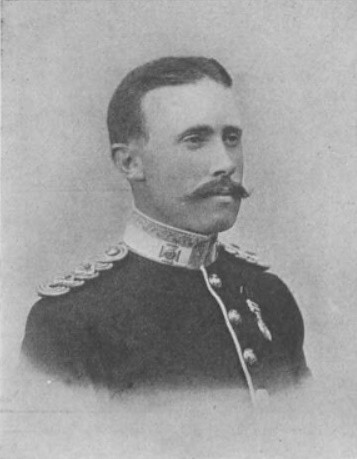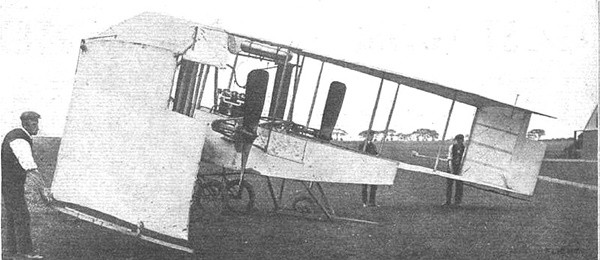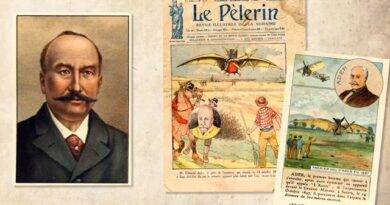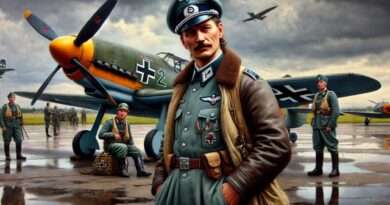John William Dunne – A Brilliant Aviation Pioneer
There are countless names in aviation who has helped the industry develop into what it is today. Especially in the earlier days of flight, when there was a lot of uncertainty regarding aviation, these people fought tooth and nail to grow the industry and make positive changes in our lives. One of these brilliant and inspiring people was John Dunne, a British soldier, author and aircraft designer born in the late 19th century.

source:wikipedia
He fought in the Second Boer War in South Africa as a volunteer soldier for the Imperial Yeomanry. Despite many health problems he had, Dunne was a brave soldier who had both brains and brawn. Along with his time spent as a soldier, he also published many books through his life. The subjects of his books were quite varied, dry fly fishing, precognitive dreams, unconventional philosophy and even bedtime stories he wrote for his children to name a few.
Aside from his military career and work as a writer, the brilliant pioneer designed more than a dozen aircraft, backed by his diligent study of flight. Although his designs went out of fashion due to aircraft design starting to become built on a completely different path, his creativity and skill in designing aircraft is still worthy of respect.
As a brave soldier, a multifaceted and talented writer and an inventive and noteworthy aircraft designer, John Dunne’s story is worth learning about. His contribution in the development of aviation industry is undeniable, so anyone interested in flight should know about Dunne. So, let’s discuss the life of this brilliant aviation pioneer and see if there is anything we can learn about his life story.
Early Life And Military Career
John W. Dunne was born on the 2nd of December 1875 in a British Army establishment in Ireland. His father was a notable British soldier of English, Irish and Scottish ancestry. Although Dunne was born in Ireland, he regarded himself as British. When he was very young, Dunne had an awful accident and was bedridden for years.
Unable to move his body, he instead started exercising his mind and got interested in philosophy during this painful years. According to what some say, he asked his nurse deep questions about time when he was just 9 years old. This was also the time when his interest in prophetic dreams started.
Dunne was also an avid reader and he loved the works of Jules Verne. Inspired by the famous novelist, he had dreams involving flight and flying machines. Even though he was confined to his bed and unable to walk, this only made his passion for the skies more powerful and Dunne kept dreaming about aviation as a child.
After the Second Boer War started in South Africa on the 11th of October 1899 when Dunne was 24, he volunteered as an ordinary trooper to fight to protect the interests of his country. The following year he got sick and went back home on medical leave. He recovered from his ilness in 1901 and immediately got back to serve his second tour as a second liutenant in 1902.
Unfortunately, some time later he was diagnosed with heart disease and had to go back gome again. Unable to serve on the field due to his health problem, Dunne focused on aircraft design to serve his country.
John Dunne’s Pioneering Work In Aviation
When Dunne could no longer serve his country on the battlefield and had to go back home, he decided to keep serving in the military as an aircraft designer. This way he could both focus on making his childhood dream a reality and designing and building useful tools for his country.
Just like many designers and inventors in the earlier days of flight, Dunne watched birds carefully and observed their movement meticulously. But contrary to others, he believed that an aircraft should have inherent aerodynamic stability.
Inspired by his childhood hero Jules Verne and backed by his detailed study around flying, Dunne built his first aircraft but unfortunately his first try was a failure. Following this unsuccessful attempt, he built several test models. In 1906, his hard work was finally able to bear fruit and he developed his first stable model which had a tailless swept wing configuration. This configuration quickly became Dunne’s trademark.
His unit’s commanding officer assigned him to the new Army Balloon Factory to build biplanes for the British Army. Until leaving the Balloon Factory in 1909 due to the War Office stopping all work on powered aircraft and becoming an official in the Aeronautical Society, Dunne designed many aircraft including Dunne D.3 which flew successfully and Dunne D.4 which could only manage to achieve short hops as well as the Dunne-Huntington triplane which was eventually built by A. K. Huntington in 1910.

John Dunne started the Blair Atholl Aeroplane Syndicate to keep building aircraft. He built Dunne D.5 which featured a 35 hp Green engine. On the 20th of December 1910 D.5 was flown by Dunne in front of an audience which included Orville Wright and Griffith Brewer. This was the first tailless aeroplane to fly in the history.
Until the liquidation of the Blair Atholl Aeroplane Syndicate in 1913, John Dunne designed and built several aircraft models.
His Later Years And Legacy
After liquidation of his Aeroplane Syndicate, Dunne retired from active flying due to his worsening health. Having to leave aviation behind, Dunne found another passion to keep himself occupied; dry fly fishing. He published his first book on this subject in 1924.
Dunne was also very interested in precognition, dreams, time and philosophy. He also published several books on these subjects including “An Experiment with Time”, “The Serial Universe” and “The New Immortality”. Dunne believed that he saw precognitive dreams and he also believed that our experience of time as linear was a mere illusion. All in all, he had very interesting ideas.
When he was 52 years old, Dunne married Hon. Cicely Twisleton-Wykeham-Fiennes and they had two children. They lived together in the Broughton Castle. John Dunne died on the 24th of August 1949 in England. He is now remembered as a brilliant aircraft designer and an inspiring pioneer in aviation.
Resources
Anon. (n.d.), J. W. Dunne, Wikipedia, Retrieved 25 May 2021
< https://en.wikipedia.org/wiki/J._W._Dunne >
Guy Inchbald (Updated 19 September 2019), J W Dunne: The Forgotten Genius, Steelpillow, Retrieved 25 May 2021
< http://www.steelpillow.com/dunne/dunne.html >
Science Museum Group Editor (n.d.), Dunne, John William, Science Museum Group, Retrieved 25 May 2021
< https://collection.sciencemuseumgroup.org.uk/people/ap20658/dunne-john-william >
for more aviators click.


